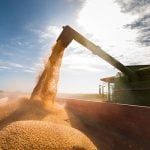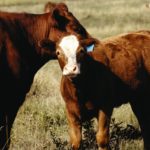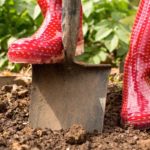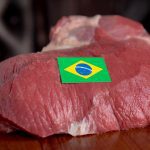
Tag Archives Environment

Yo-Yo diet strategies
Research on the Record with Reynold Bergen
Getting weaned calves on feed can be a challenge. This is often attributed to the change from a forage-based diet to unfamiliar feedlot rations and feed bunks, distress from recent weaning, illness, etc. To compensate for this, some feeders use a relatively high-energy receiving diet, the rationale being that if they’re not going to eat […] Read more

Winter grazing options
Grazing with Steve Kenyon
As I write this, our summer is winding down and the evenings are starting to cool off. It won’t be long now until our killing frost hits us. This happens usually sometime in mid-September for us here in Busby, Alberta. We have had a good summer this year with plenty of moisture and we left extra residue all […] Read more

Putting a value on forages
A new project by the Canadian Forage and Grassland Association will establish protocols for high-performance forage management
With over 70 million acres of dedicated Canadian cropland and a direct economic value of $5.09 billion, forages are the country’s third-largest crop, just behind wheat valued at $5.2 billion and canola at $7.3 billion. There’s no doubt forages are good for the economy. Perennial forages play an environmental role with the ability to reduce […] Read more
David Francis Farm wins CCA Environmental Stewardship Award
NewsMakers from the September 2017 issue of Canadian Cattlemen
David and Vicki Francis and their son Bret of David Francis Farm of Lady Fane, P.E.I. are the 2017 winners of the Canadian Cattlemen’s Association Environmental Stewardship Award. The family has invested heavily in soil conservation on its potato and beef operation building grassed waterways, buffer zones, terraces and berms to reduce erosion. Their rotational […] Read more

What is land for?
Straight from the hip with Brenda Schoepp
It started as a potential narrative for agricultural peril with the question: “What is land for?” That got my attention and I was fostering the dismal thought of a counter defence. But the context of the question had deeper meaning. What will land be for? Throughout history land has been fought for, won and lost […] Read more

Eastern beef research facilities get an upgrade
Research: News Roundup from the August 2017 issue of Canadian Cattlemen
A $15.5 million injection into the University of Guelph’s Elora research farm is expected to produce a world-leading beef research facility. Meat science researcher and nutritionist Dr. Ira Mandel says the new facility will allow the university to amalgamate the beef research herds from New Liskeard and Guelph. “We’re going to have a much larger […] Read more

Biochar could be a game changer
Environment: News Roundup from the June 2017 issue of Canadian Cattlemen
A multi-pronged research project based in Alberta aims to assess whether feeding biochar in backgrounding and finishing rations could be a way to reduce methane emissions created during enteric fermentation in the ruminant digestive system. Biochar can be manufactured from any type of feedstock with a fibre component — wood waste from saw mills, coconut […] Read more

Environmental goods and services offer more questions than answers
Research on the Record with Reynold Bergen
The beef industry takes pride in how forage, grazing and beef production benefit the environment. These environmental goods and services (EG&S) include carbon sequestration, plant and wildlife habitat, reduced soil erosion, watershed recharging, scenery, etc. While consumers pay for beef, the EG&S are free. For instance, many ducks need grasslands and wetlands to nest and […] Read more

Five tips for eco-friendly gardening
The word eco-friendly can be used in many areas of our lives: at work, at home, at play. Being eco-friendly in all these aspects is quite a simple concept with incredible opportunities for creativity. The bottom line is eco-friendly is all about working with nature, not against it. As gardeners we play an ever-increasing unique[...]
Read more
Read more

Locking down feedlot ammonia emissions
Sustainability: News Roundup from the May 2017 issue of Canadian Cattlemen
Innovative research is reshaping what is known about ammonia and related emissions from feedlots. And that new knowledge may help the industry to adjust its management, shape and react to public policy more effectively. “Livestock are significant emission contributors,” says Dr. Sean McGinn of Agriculture and Agri-Food Canada, a long-time researcher in the emissions area.[...]
Read more
Read more



